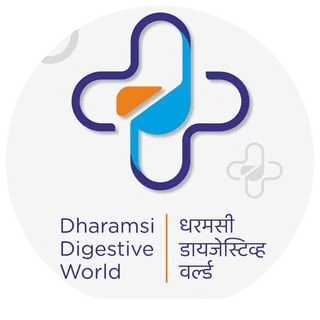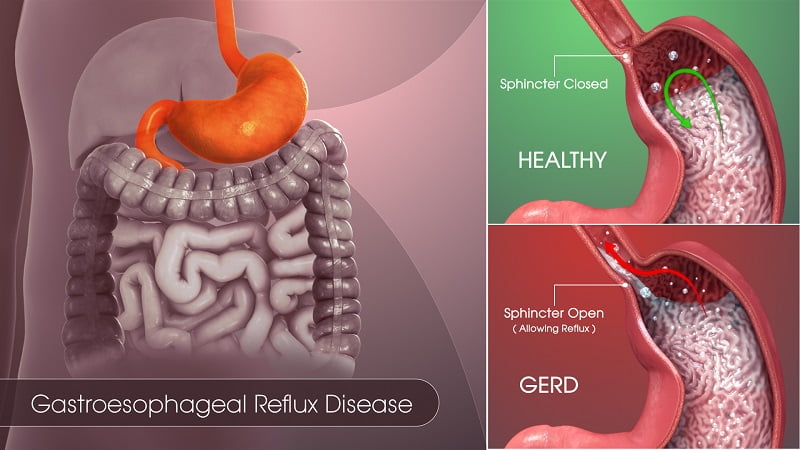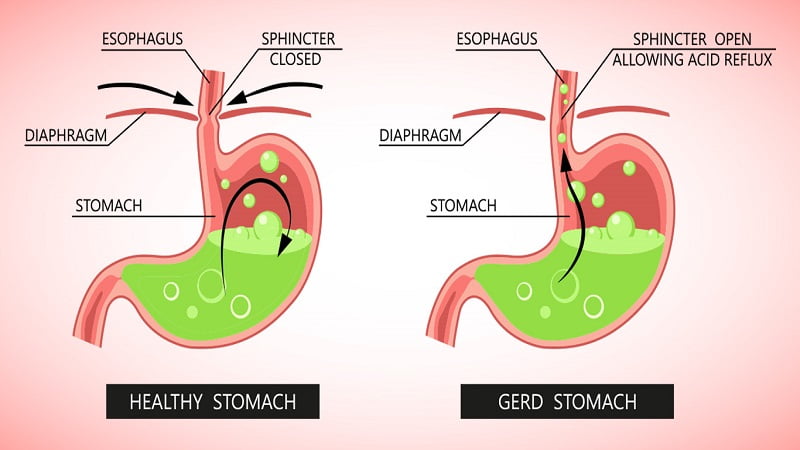Gastro-esophageal Reflux Disease (GERD)
Treatments
Gastro-esophageal reflux disease (GERD)
GERD is a chronic condition where stomach acid flows back into the esophagus, causing irritation and inflammation. It occurs when the lower esophageal sphincter (LES), a ring of muscle between the esophagus and stomach, becomes weakened or relaxes abnormally, allowing stomach contents to rise up into the esophagus. This backflow of acid can lead to symptoms such as heartburn, regurgitation, chest pain, difficulty swallowing, and coughing.
Symptoms

Heartburn
A burning sensation in the chest or throat.

Regurgitation
Sour or bitter-tasting acid backing up into the throat or mouth.

Chest pain
Discomfort or pain in the chest, often mistaken for a heart attack.

Difficulty swallowing
Sensation of food sticking in the throat.

Chronic cough
Persistent cough, often worse at night.

Laryngitis
Hoarseness or irritation of the voice.

Dental erosion
Acidic stomach contents can wear away tooth enamel over time.

Asthma symptoms
Worsening of asthma symptoms due to acid irritating the airways.
When to See a Doctor
Consult a doctor immediately if:
Symptoms persist despite lifestyle changes or over-the-counter medications.
Difficulty swallowing persists or worsens.
Unintended weight loss or persistent nausea.
Causes
Weak or dysfunctional lower esophageal sphincter (LES).
Hiatal hernia:
When a portion of the stomach protrudes into the diaphragm, disrupting the function of the LES.
Delayed gastric emptying:
Slowed emptying of the stomach can increase the likelihood of reflux.
Obesity
Excess weight can put pressure on the stomach and LES, leading to reflux.
Pregnancy:
Hormonal changes and pressure from the growing uterus can contribute to GERD symptoms.
Certain foods and beverages:
Spicy, fatty, acidic, or carbonated foods and beverages can trigger reflux.
Required tests for gastro-esophageal reflux disease treatment

Endoscopy
A procedure where a flexible tube with a camera is inserted into the esophagus to examine the lining and detect any abnormalities.

Esophageal pH monitoring
Measures the amount of acid in the esophagus over a 24-hour period to assess the frequency and severity of reflux episodes.

Esophageal manometry
Measures the pressure and coordination of muscle contractions in the esophagus to evaluate the function of the LES and esophageal muscles.



